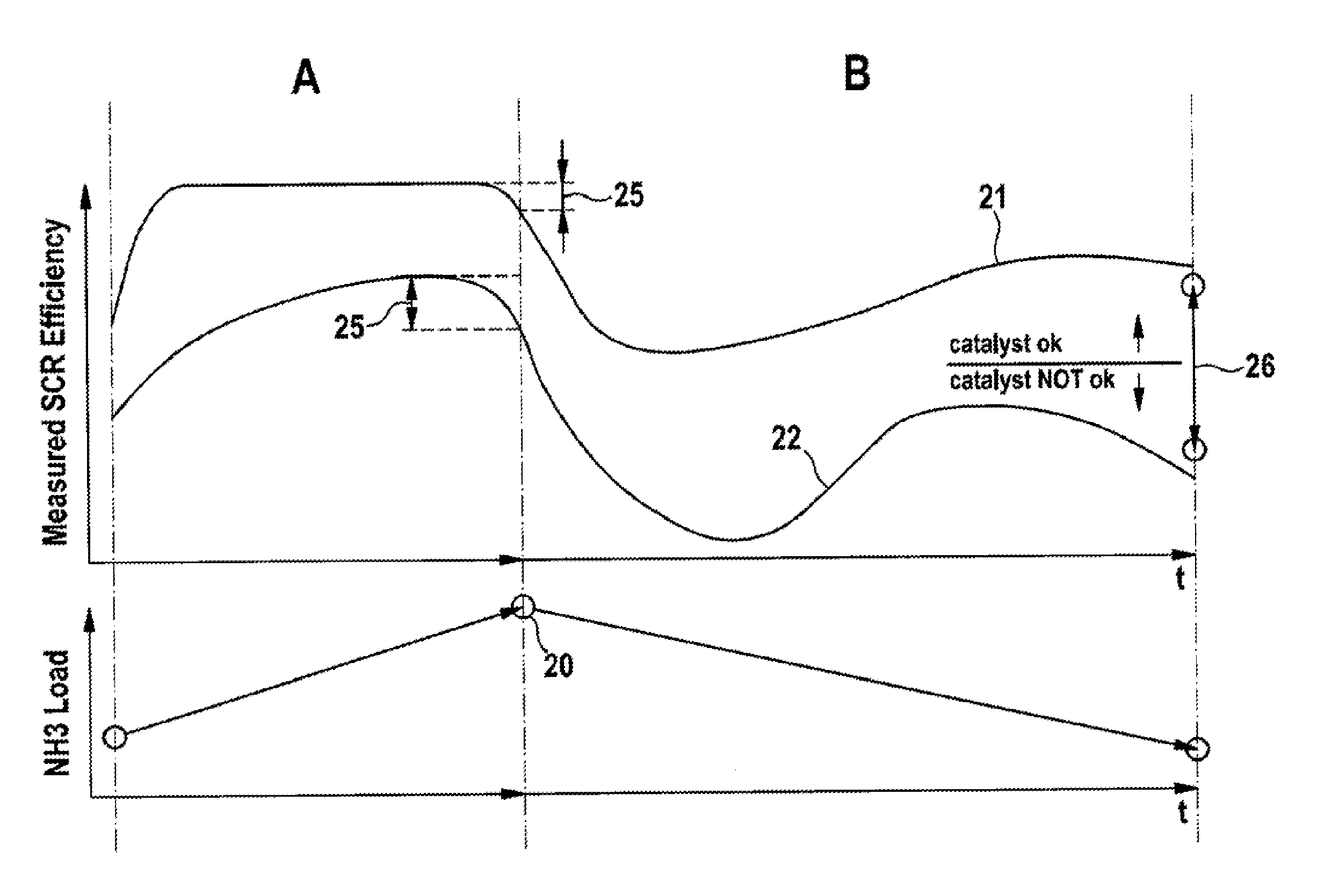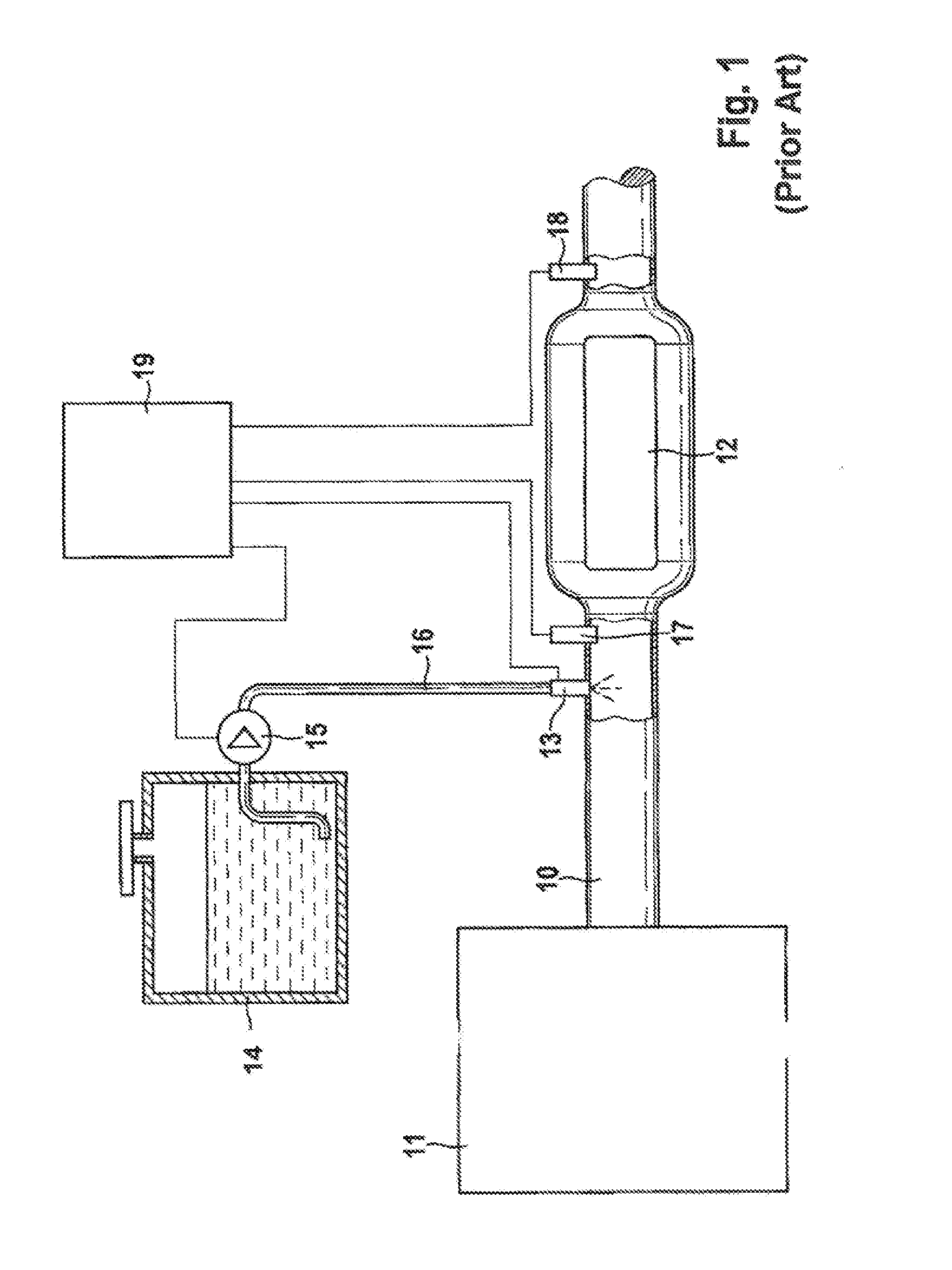Method for monitoring an scr catalytic converter
- Summary
- Abstract
- Description
- Claims
- Application Information
AI Technical Summary
Benefits of technology
Problems solved by technology
Method used
Image
Examples
Embodiment Construction
[0032]FIG. 1 firstly schematically shows the components, which are known per se, of a catalytic converter system. Arranged in the exhaust section 10 of an internal combustion engine 11 is an SCR catalytic converter 12 which selectively reduces nitrogen oxides in the exhaust gas by means of a selective catalytic reduction (SCR). For said reaction, ammonia (NH3) is used as reactant. Since ammonia is a toxic substance, said substance is gained from the non-poisonous carrier substance urea. The urea, in the form of liquid urea solution, is injected by means of the dosing device 13 into the exhaust section 10 upstream of the SCR catalytic converter 12. The aqueous urea solution is stored in a reducing agent tank 14 from which the solution is supplied to the dosing device 13 by means of a delivery pump 15 via a pressure line 16. To monitor the nitrogen oxide concentrations, a nitrogen oxide sensor 17 is provided upstream of the SCR catalytic converter 12 and a nitrogen oxide sensor 18 is ...
PUM
 Login to View More
Login to View More Abstract
Description
Claims
Application Information
 Login to View More
Login to View More - R&D
- Intellectual Property
- Life Sciences
- Materials
- Tech Scout
- Unparalleled Data Quality
- Higher Quality Content
- 60% Fewer Hallucinations
Browse by: Latest US Patents, China's latest patents, Technical Efficacy Thesaurus, Application Domain, Technology Topic, Popular Technical Reports.
© 2025 PatSnap. All rights reserved.Legal|Privacy policy|Modern Slavery Act Transparency Statement|Sitemap|About US| Contact US: help@patsnap.com



